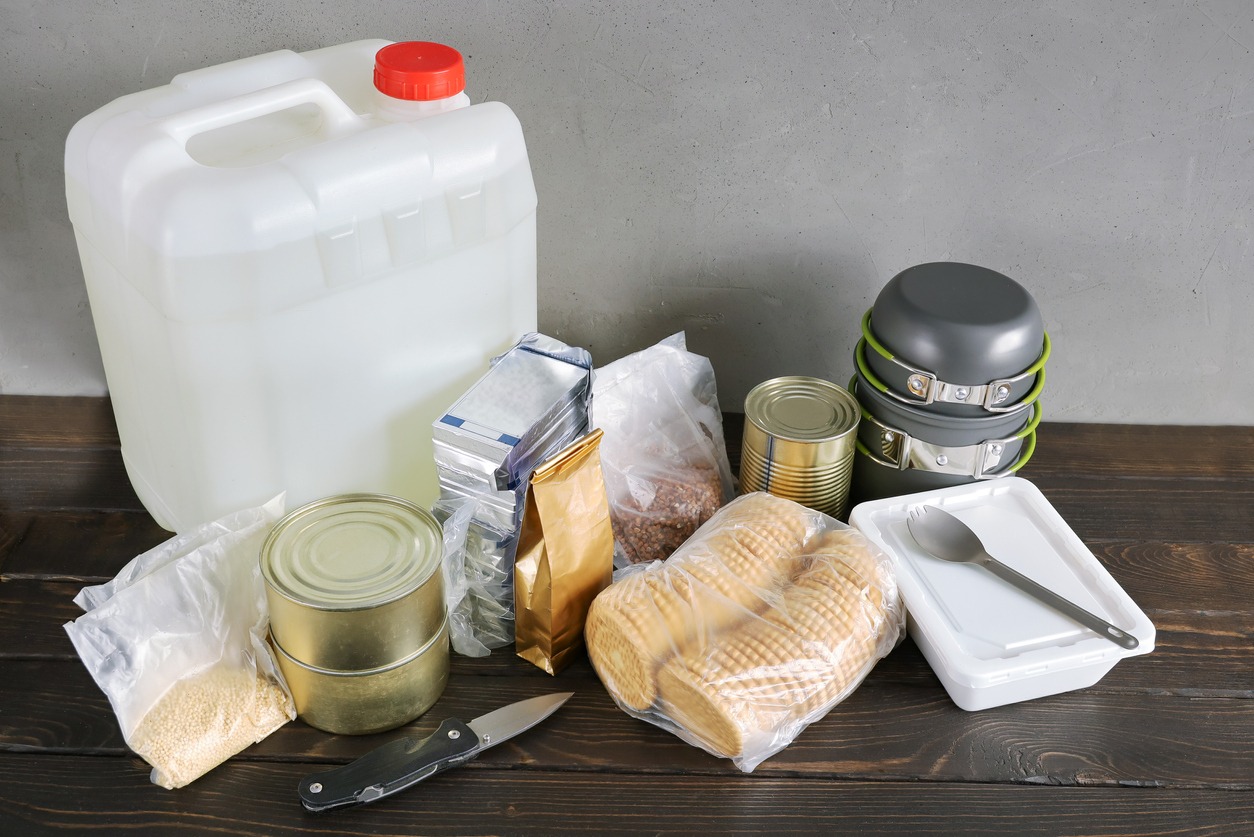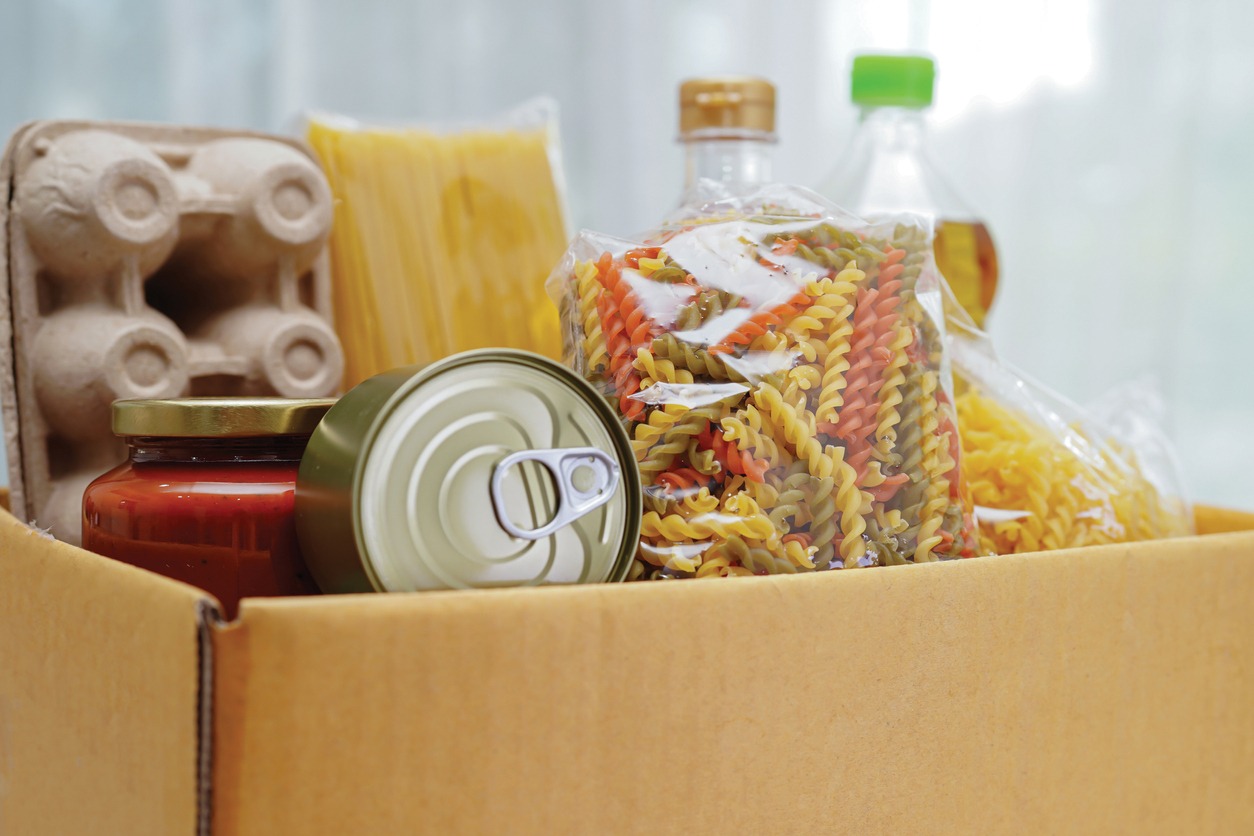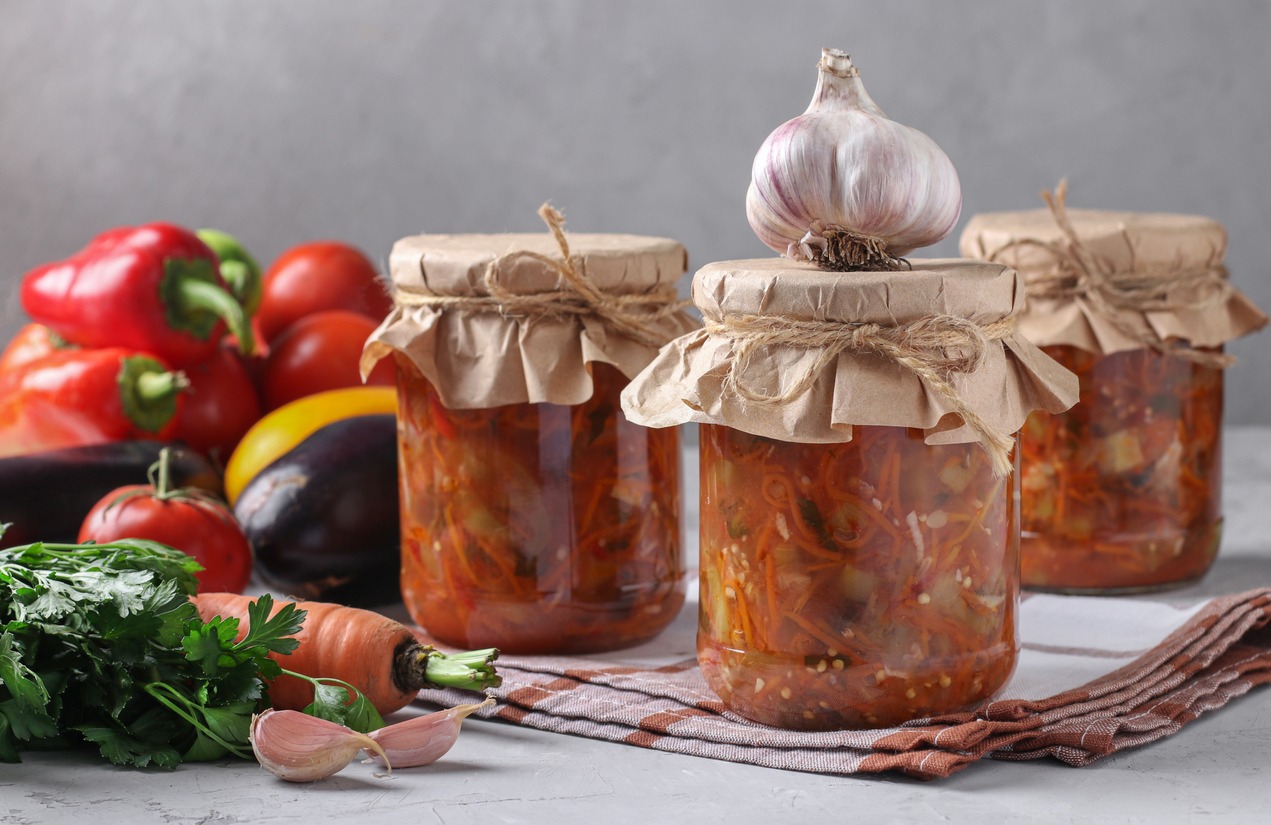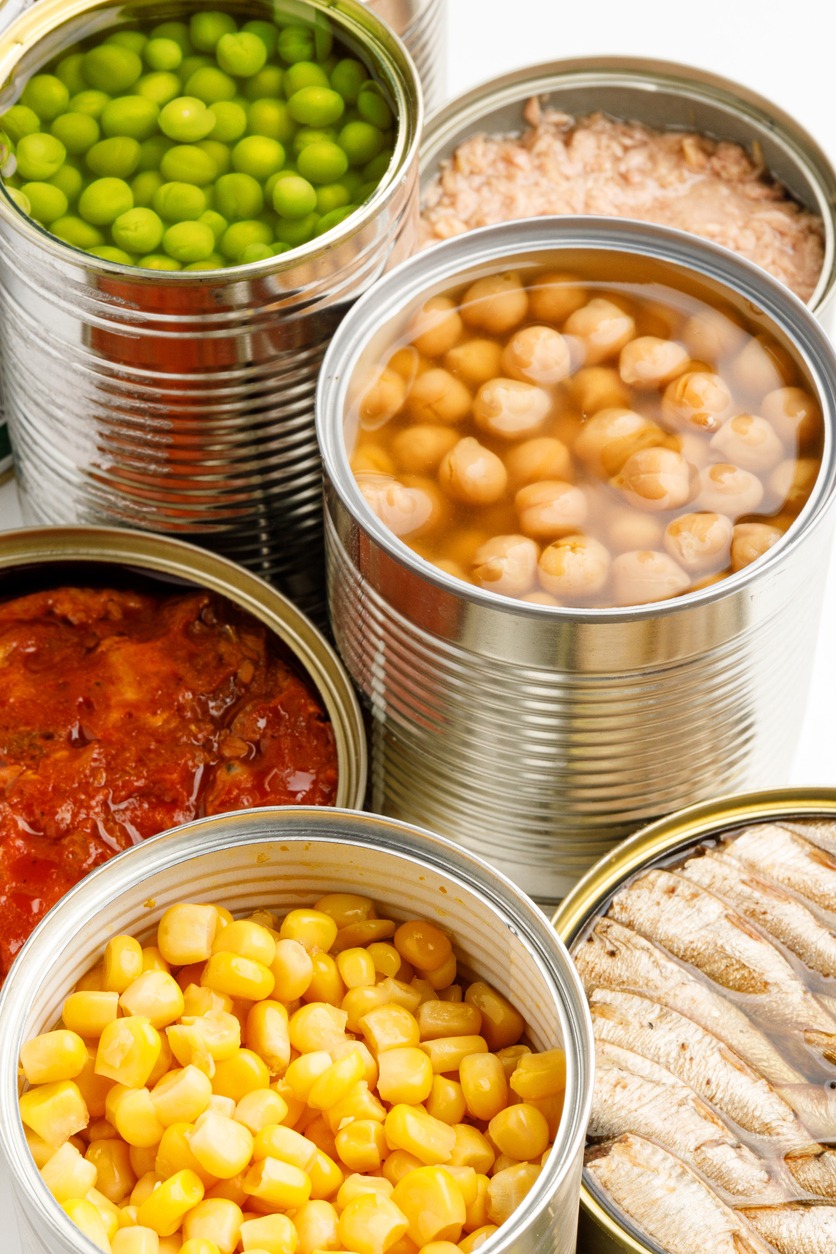People have benefited for ages from learning how to properly store food, starting with families that owned larders or pantries. Long-term food storage was essential back then since there was no refrigeration as there is now, thus it was the only way to keep food fresh. Food should be one of your top considerations when making survival preparations for survival. Although a human can go without food for a long time, we’ll need our rations to maintain our energy levels. We need to consume enough calories each day.
A Brief Overview of Long-Term Food Storage
- When food is correctly stored in the appropriate containers, it lasts longer. Many shelf-stable items are not sold in packaging that keeps them secure for a long time. Foods should be kept in containers that are sealed off from light, water, pests, and rodents.
- Rotating food storage is necessary. Many food reserves are not meant to be purchased and then forgotten. They must be switched out frequently.
- Eat the food that has been on hand the longest first in an emergency. Don’t make arbitrary decisions. Follow the principle of “first in, first out.”
- Environment is important. The actual shelf life is significantly impacted by the storage environment. Most long-term foods perform best at temperatures between 55°F and 70°F in a dry, cool, and dark environment.
Dry Pack Canning Technique
The dry pack canning method is a well-liked strategy for long-term food storage. When you travel or find yourself in an area at high risk for natural or man-made disasters, this will be useful. This method is employed to store goods with a moisture content of less than 10%. Additionally, they contain less oil. Consider basic items like flour, dry cereal, powdered milk, eggs, pasta, sugar, and so forth.
Beans, corn, and dehydrated vegetables are other excellent choices for dry-pack canning. If you are successful in using this technique, the foods you preserve can last for many years—possibly even decades. Before serving, you can test the food by giving it a hammer knock. They are sufficiently dry for this operation if they fracture. The moisture level is most likely too high if the end product is more of a shattered appearance.
You must choose the type of storage you desire after performing this test. The rest is quite simple after you have the containers and oxygen absorbers. Put the food into the container and one or two oxygen absorbers on top of that. Wait for the absorber to evacuate the air before tightening the screw or placing the lid. When this is completed, and your food is sealed for storage, the lid will make a distinctive sound.
Some food storage devices come with jar attachments already, so they won’t need oxygen absorbers. When packaging, these devices will automatically remove the air from the container. If you do want to employ this technique, bear in mind that you’d need to have enough storage space to accommodate all of those containers. It’s not hard to find jars, cartons, and absorbers, especially if you look online, but be sure to maximize your available space. The buckets are the greatest choice if you want to keep a lot of food.
How to Long-Term Store Food
At first, long-term food storage seems scary. The expenses appear prohibitive, and packing food takes a lot of effort. However, starting now will help you save time and money in the long term. As a consequence, you’ll make fewer visits to the supermarket, spend less gas in your car, and have more food on hand for simpler cooking. Not to mention the comfort it brings to know that you and your family are secure in case of need.
1. Choosing the Correct Items
It’s crucial to pick the appropriate items for your long-term storage. Food that has gone bad will be a hassle and a waste of storage space. To ensure that the food is as dry and oil-free as possible, the cracking test is crucial. Wet goods will require their method of preservation and packing if you must preserve them. Water should be the first thing you consider stockpiling before food. Make sure you have at least a gallon per person for each predicted day of survival because we can’t go without water for very long. This alone will occupy a substantial amount of room. If that’s a problem, you should have a water purifier, bleach, water purification pills, and other solutions available.
Returning to the food, it is crucial to stock up on foods that are high in carbs. A crisis calls for a lot of energy and endurance, which are mostly supplied by carbohydrates. The fundamental options are grains, rice, and pasta, so make sure these make up between 50 and 60 percent of your entire dietary supply. For greater energy and better health, you’d need some good sources of protein after the carbs. The best options in this case are protein bars, dry or canned meat, and canned beans. These should account for around a quarter of your long-term food storage.
Supplemental foods like dry milk, powdered eggs, dehydrated vegetables, fruits, or entire meals should make up the remainder of the storage. Given that dried beans must be cooked with water, they are a little bit of a risk. Include sugar or a sugar substitute, salt, and pepper in your stock as well. When you’re planning for crises, other seasonings like garlic powder and onion powder could also be useful. Don’t forget to include some oil in your cooking. Even if it fills you up, dull food will sap your motivation while you’re stuck somewhere.
2. Plastic Buckets
Grain should be stored in buckets made of food-grade plastic and fitted with gasket seals if at all possible. Never store food in a plastic bucket that has previously held items other than food or that is not made of plastic that is approved for use in food storage. The bucket offers an additional layer of defense against vermin, prevents the packaging from becoming damp from the humidity in the storage area, and contributes to the preservation of the product’s freshness. It does not stop the insects that were originally contained within the packages from reproducing.
However, it will keep the infestation under control and prevent it from spreading to other foods that are stored. Long-term storage of large quantities of dry food products (such as grains, beans, flour, and dry milk, amongst other examples) can be accomplished at a low cost using plastic buckets. There is a multiple-use potential for both the buckets and some of the lids. Plastic buckets are available in a dizzying array of shapes and dimensions to suit your every need.
To encourage healthy air circulation and to keep the buckets off the ground, they should be stored at a height of at least half an inch above the floor on pallets or boards. Do not stack more than three buckets high to avoid the possibility of the stack toppling over and breaking the lids or seals on the lower buckets. Perform routine checks to ensure the buckets’ integrity. Put away in a location that is shielded from both direct and indirect light.
3. Glass Jars
Jars made of glass are excellent reusable containers that can be used for the short-term as well as the long-term storage of dry goods. Some of the jars are high-quality canning jars that cost a lot of money, while others are simply recycled containers for peanut butter, mayonnaise, or spaghetti sauce. The compact sizes are an excellent time saver.
Glass jars are available in a wide range of sizes and can be used multiple times over the course of many years. Because it is non-permeable, neither air nor water can pass through it unhindered. It is not difficult to imagine what is contained within the container. Glass, in contrast to plastic, will not harbor bacteria within the glass itself and will not leach bacteria into the food product. They come in a huge variety of different forms and dimensions to choose from.
4. Oxygen Absorbers
Oxygen absorbers are devices that physically remove oxygen from the atmosphere inside a container. This results in the death of adult insects and makes it impossible for insect larvae to survive. Iron powder is contained in the little packets that make up oxygen absorbers. They are constructed out of a material that does not prevent the passage of oxygen and moisture but does prevent the iron powder from escaping. The rust on the iron can be traced back to the moisture in the food. Iron is capable of taking in oxygen as it undergoes oxidation.
Oxygen absorbers are superior to vacuum packaging when it comes to removing oxygen from a given space. Approximately 21 percent of air is oxygen, while 79 percent is nitrogen. Only oxygen is taken in by the packets that contain oxygen absorbers. The vast majority of the remaining air is composed of nitrogen. The presence of nitrogen inhibits the development of insect life. Because oxygen shortens the life of food, oxygen absorbers, in addition to preventing the growth of insects, lengthen the amount of time that food can be used after it has been stored.
5. Selecting the Proper Space
The most frequent and logical location for long-term food storage is typically a basement. Whatever type of place you select, it needs to be dark, dry, and primarily chilly. A sizable closet or garage would work in place of a basement if you don’t have one or if it is prone to flooding. You should measure the available space before purchasing or packing any food containers. This will enable you to make more sensible decisions. The appropriate spaces for water, cans, boxes, bottles, or bins should then be marked out. If necessary, you could also want to consider installing some shelving to make the most of the available vertical space.
6. Construct a 3-Month Food Supply
It is advised to begin with anything short-term before ever considering your long-term supplies. A great starting point to use as a benchmark is a 3-month supply. In your cupboard, look for things that are simple to keep, such as canned and boxed goods. The objective is to get rid of your weekly shopping habit and provide you with a safety net on which you may rely as you construct something bigger and more important.
7. Make a Long-Term Strategy
You can begin to work on your long-term plan while you develop your three-month supply. Start compiling a list of every household member’s food preferences. When you begin shopping, these will be crucial, List the meals that you all like to eat. When constructing food storage, waste elimination is the main objective. Additionally, you should keep a record of your daily meals to try to calculate the daily calorie minimum requirement for each person.
8. Locate Your Suppliers and Start Buying
Finding the best store to buy your food from can help you save a ton of money, especially if you shop in quantity. The best place to start is at a membership store because they sell bulk quantities for much less money. It is not advised to purchase food in bulk from a conventional grocery shop. Find the greatest locations close to you by doing some local research. The ideal stores for you will vary depending on where you are.
Tips for Food Packaging for Long-Term Storage
Packaging for long-term storage must have tight seals that stop oxygen from circulating the food and maintain a suitable level of moisture.
1. Plastic Bottles
Put your used plastic bottles aside to be cleaned and to begin accumulating rather than throwing them away. Before you know it, you’ll have a dozen bottles prepared to keep your grains. Wheat, rice, beans, and other comparable food items keep best in recycled plastic bottles, which is an inexpensive storage solution. You can begin filling the bottles with food once you’ve cleaned them empty. Although much weaker than glass jars, these bottles offer a strong barrier against oxygen and additional moisture. Milk jugs should not be used as storage containers. They don’t offer a seal that is reliable enough to store food. The airtight seal lid is the most important component of any bottle you select. Verify that each bottle’s lid can properly seal by inspecting it.
2. Glass Jars
Glass jars may be the best option for your food storage needs if you’re searching for something more upscale and safer. They come in a wide range of sizes to accommodate various meal alternatives, just like plastic bottles. Glass jars can be recycled as well. After a thorough cleaning, you may either buy new ones or recycle the old ones you have lying around your home. They are a more durable choice that builds stronger moisture and oxygen barriers. Glass jars can also prevent contaminants from entering your food. They are a cheap solution to secure your food more tightly and keep pests and rodents out.
The drawback of glass is how brittle it can become if handled improperly. It needs to be packaged carefully and placed on shelves. Additionally, you must put them near the rear of your shelves to reduce the possibility of them falling and breaking. Glass jars can be used for both short-term and long-term food storage because of their incredible versatility. Mason jars are the most dependable glass jars to utilize due to their dependability and airtight seal. Foods kept in glass jars need to be completely dry and have moisture under 10%. Foods that fit the bill have little oil and fat in them as well.
3. Mylar Bags
Mylar bags are a more demanding storage option that necessitates additional planning and up-front expenses. However, they offer your food multiple layers of defense with strong barriers against light, air, moisture, and insects. You may buy premium Mylar containers designed specifically for storing food. They are more adaptable for storage and tightly seal to ensure your food has a lengthy shelf life.
Mylar bags come in a variety of sizes, however, additional tools are required to use this form of storage. You will require a bucket, a heat source for sealing, oxygen absorbers, and a permanent marker for labeling. Nuts, granola, raisins, and other similar foods with a high moisture content should not be placed in your Mylar bags. Particularly when stored with oxygen absorbers, they do not store well. Mylar bags function by sealing off all oxygen to produce a seal that keeps the food inside from spoiling.
How Do Oxygen Absorbers Work?
To assist seal your food for long-term storage, oxygen absorbers are a little device that must be employed. They are put in the bag or jar with your food and take the oxygen out of the area. They can eliminate up to 99.99% of the oxygen in your food storage when used properly. Oxygen absorbers should be included in any storage strategy you choose to adopt as they operate swiftly. They can fit in Mylar bags, glass jars, and plastic bottles. You have up to 3 hours after they are opened to put them in the container before it’s too late.
By creating a chemical reaction with oxygen, oxygen absorbers function. They are composed of iron powder, which rusts when in contact with oxygen. That means the absorbers take in all the oxygen they can when exposed to oxygen. Oxygen absorbers are only useful when used with foods that have little moisture, fat, or oil. The oxygen absorbers can lead to botulism if there is too much moisture present.
What Are the Advantages of Food Storage for a Long Term?
It takes dedication to build a long-term food storage supply. The ideal way to stay motivated and comprehend why it is important for your household is to think about the advantages. Since it is impossible to predict when the next emergency or disaster will occur, your family’s security and protection must come first.
1. Peace of Mind
It is difficult to put a monetary value on peace of mind. Knowing that you and your family have a plan in place to keep you safe and well in the case of food shortages, power outages, or other similar catastrophes can allow you to sleep better at night. Many people would not have predicted pandemic-related lockdowns. This has made people realize how critical long-term food storage is. Don’t wait until the next disaster strikes to get started.
2. Convenience
Not only do you provide outstanding protection for yourself, but you also provide unparalleled convenience. You have a vast list of foods in your store that can be used at any time. This allows you to avoid going to the store when you don’t have to, saving you time in the long run. By developing a long-term food storage stockpile, you can buy groceries less regularly and free up more time in your life.
3. Spend Less Money
While the first time and financial commitment may be daunting, you will end up saving more money in the long run. Purchasing items in bulk is significantly less expensive than regular grocery shopping. You can also avoid excursions to the grocery shop to buy one-time things while they are at their most expensive. Other cost savings include petrol consumed to go to the store and impulse purchases made while there. This is the most cost-effective strategy to develop your food storage.
It can be difficult to know how to keep food while packing a survival kit for an emergency. With natural calamities such as floods, earthquakes, conflict, and tornadoes wreaking havoc on developed places around the world, everyone should understand how to preserve food for the long term.



